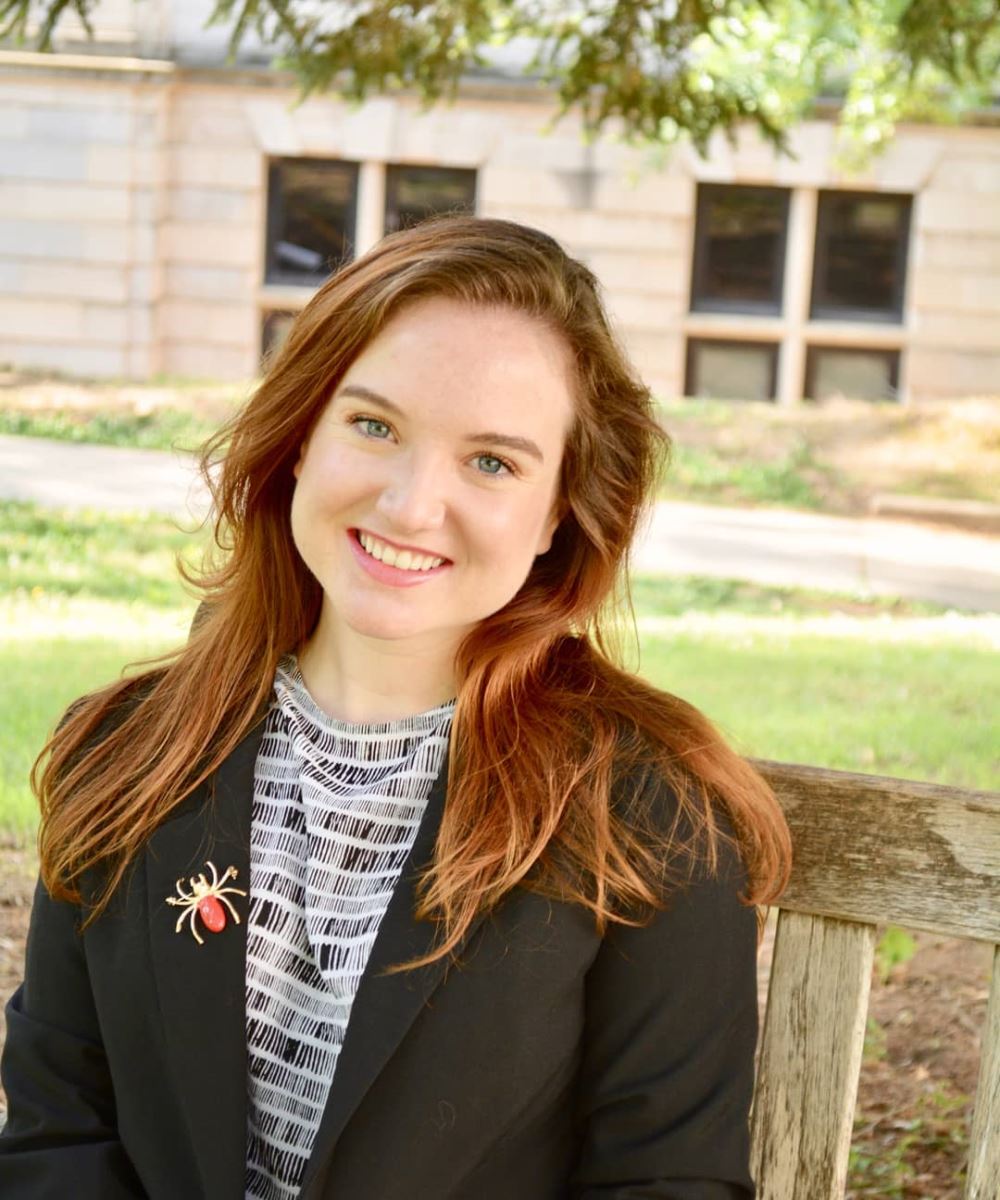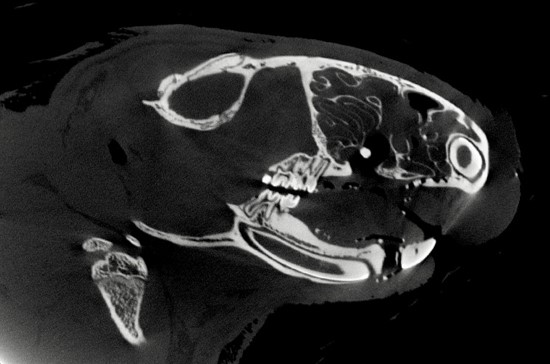
Caitlin Yoakum, doctoral student in the Department of Anthropology, has received a $29,800 Doctoral Dissertation Research Improvement Grant from the National Science Foundation to study the masticatory apparatus and sensory mechanisms that allow a primate to determine if a food is safe to chew and eat.
This research could ultimately shed light on evolutionary changes seen in living primates in comparison to modern humans, who after the advent of agriculture and significant dietary changes, saw major shifts in the development of human masticatory apparatus — including the jaws, teeth, supporting structures, muscles, tongue, lips and cheeks.
 The NSF award is one of only a few granted each year to doctoral students, and the competitive grant will help fund Yoakum's final year of Ph.D. research.
The NSF award is one of only a few granted each year to doctoral students, and the competitive grant will help fund Yoakum's final year of Ph.D. research.
Yoakum's work uses microCT scanning and iodine staining methods to examine the relationship between tooth shape and innervating structures, with a focus on how these structures vary in relation to primate diets. All scanning for this project will be conducted at the MicroCT Imagine Consortium for Research and Outreach in the Center for Advanced Spatial Technologies at the University of Arkansas.
"Primate teeth that are well adapted to a mostly plant and insect-based diet likely need more nervous tissue in the molars and other posterior dentition, while fruit-eating primates are expected to have more nerve supply in their front teeth," Yoakum said.
Data shows that individuals eating tougher diets also manipulate food more extensively than individuals with less resistant diets. This manipulation is partly due to how primates use nervous tissues to assess the toughness or stiffness of an object before eating it to ensure that it does not damage their teeth, Yoakum said.
 "Soft-tissue studies in anthropology are rare and incredibly opportunistic, particularly research involving fixed primates," Yoakum said. "Before the use of iodine staining methods, which are considered relatively novel in the field, the quantification of any soft-tissues was time-consuming and destructive."
"Soft-tissue studies in anthropology are rare and incredibly opportunistic, particularly research involving fixed primates," Yoakum said. "Before the use of iodine staining methods, which are considered relatively novel in the field, the quantification of any soft-tissues was time-consuming and destructive."
Yoakum said her project will create a large database of over 40 primate species, with 135 iodine-stained soft-tissue individuals. The data generated in this project will address questions about the interaction of soft-tissue and the accompanying bony structures for a variety of topics surrounding primate mastication and will be the first to quantify the nervous structures involved in primate chewing.
.jpg) "To date, no study has addressed questions regarding primate tooth use in chewing and food processing using the nervous structures themselves, thus leaving a large gap in our knowledge regarding how dietary patterns are reflected in nervous tissue," said Claire Terhune, Yoakum's dissertation advisor and assistant professor of anthropology.
"To date, no study has addressed questions regarding primate tooth use in chewing and food processing using the nervous structures themselves, thus leaving a large gap in our knowledge regarding how dietary patterns are reflected in nervous tissue," said Claire Terhune, Yoakum's dissertation advisor and assistant professor of anthropology.
Terhune and Yoakum said that if a link can be established between dental morphology, the bony canal through which the nervous tissues, arteries, and veins run, then this data can be used to assess if the reorientation of these nervous tissues affects variation in sensory and motor abilities of the mandible.
Using digital technology rather than destructive techniques to establish the size and location of the mandibular and maxillary nerve is already garnering extra recognition for Yoakum's work.
"Caitlin also just won an award for an image generated from this research from the FASEB American Association of Anatomists BioArt contest," Terhune said. "Her work is quite extraordinary."
Yoakum and Terhune said that all the scans created in this project will be made openly available to the public to help promote open access communication and future innovation throughout the scientific community.
Their intent is also to engage a wider audience by participating in a number of outreach projects with local school districts in Northwest Arkansas to bring the concepts of evolution and anthropology to K-12 educators and students, with a focus on young women in the local community.
"This includes upcoming featured blog posts that are scientific in nature but written to reach a broader audience to help inform and excite the general public about Caitlin's research project," Terhune said.
Yoakum said she hopes this study adds a large volume of data on the size and location of primate masticatory nerves that could be used to establish the plasticity of nervous structures and their overall genetic stability across species - leading to multiple new insights on evolutionary changes.
Visit the Terhune Lab online to learn more. You can also learn more about the person behind the science with Caitlin Yoakum's Q&A.
A version of this story also ran in the Fulbright REVIEW publication.
Topics
Contacts
Andra Parrish Liwag, director of communications
J. William Fulbright College of Arts and Sciences
479-575-4393, liwag@uark.edu